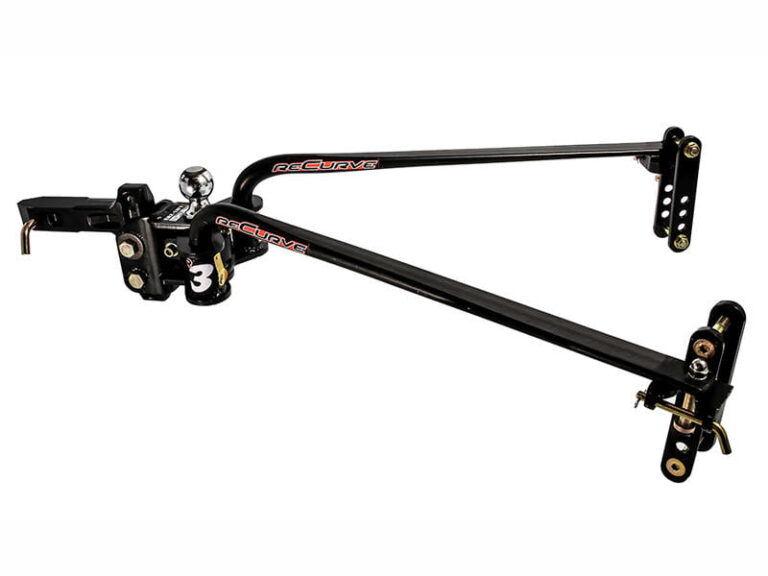Gooseneck trailers are the biggest perpetrators of the enclosed trailer world. These heavyweights are for the heaviest loads, whatever large material has to be delivered safely and securely. Gooseneck trailers have a lot of benefits for heavy load transporter. So, let’s talk about the installation of the gooseneck trailer.
Things to remember before towing a gooseneck trailer

Every trailer is different, and your car’s hitch is in a different location from the previous trailer’s hitch. So before you hook up your trailer, you’ll need to take measurements of everything.
Find a proper place for the operation
You’ll be able to tell if there’s enough space to turn with clearance if you do it this way. Install the gooseneck hitch in a new location that is appropriate for your trailer if the measurements are incorrect.
Begin measuring from the back of the vehicle your towing’s glass. To accomplish the proper installation, a height of 36′′ is advised. This distance will allow you to perform both wide and tight bends without risking damage to your trailer or truck. If this distance appears to be a little too long for your vehicle or service body, you may be able to reduce it by a few inches to accommodate.
Modifications may be needed
You may need to make a few changes to your truck. We had to change our vehicle as it had no holes in the truck bed. So, we had to drill a hole in the middle of my truck bed to connect the hitch ball properly to the frame. If you have a truck with a smaller bed, you may require some modifications.
Tools to be needed
You’ll need equipment like a wrench, drill, and saw if you want to install your gooseneck hitch yourself.
A measuring tape or ruler is another essential item you’ll need during the process. This project requires extensive measuring to ensure that everything is properly positioned.
A professional would be your best bet if you aren’t sure about your automotive talents or need any fabrication work done.
How to hook up a gooseneck trailer? (Step by step)
There are also a few things to keep in mind when towing a gooseneck trailer. The design of a gooseneck is different from standard covered trailers, as the gooseneck hitch installation is done within the vehicle’s bed.
This allows a gooseneck trailer to be attached to the tow vehicle over the back axle, as compared to a hitch receiver, which is placed at the vehicle’s back. This gives the towing process significantly more stability, allowing heavier loads to be securely transported.
Now we will talk about how to set up a gooseneck trailer properly.
- The first thing you have to do is make sure your truck is equipped with a gooseneck prep package. That’s a place to install the ball’s safety chains as well as a trailer wiring inside to better your truck.
- When the truck is ready, you want to ensure the trailer is secured. That means your wheel chocks are in place so that the trailer won’t move.
- Then raise the jack high enough so that the coupler clears the tailgate in the lower position.
- Then lower the tailgate and press the bed lowering mood of your truck (If available) to reduce the bed with air suspensions a few inches.
- Then reverse your car to the backside and align the coupler properly with the trailer hitch ball.
- Raise the truck’s rear end back into the coupler. You can do this with a jack also.
- Once the coupler and balls are engaged, you can use the pin to lock it down. Attach your safety chains, your break-away cables, and the wiring to the trailer of your truck.
- After these steps, you can close the tailgate and crank the jack to make sure it’s all way up and out of the way.
- Finally, check the trailer lights, stability, and all the connections properly; remove the chocks from the wheel, and you’re good to go.
Read:
- What is a 5th Wheel to Gooseneck Adapters?
- 4 ways to Remove Rusted Trailer Hitch Ball
- Is it safe to pull a gooseneck trailer with a bumper hitch?
Still not sure how to do it? Watch this video:
Also read: trailer hitches and Hitch classes types
How big of a truck do you need to pull a gooseneck trailer?
It’s not about how big or small the truck is. It’s all about proper weight distribution and space to handle it properly. Because goosenecks are designed to carry extremely heavy loads, the first step is to ensure that your tow vehicle has the required towing capability. Gooseneck flatbed trailers have an average load capacity of 16,000 pounds.
Read: Honda fit towing capacity: Kayak, Trailer, and More
When asked for advice on towing a fifth-wheel or gooseneck trailers, we often recommend 1-ton trucks with an 8-foot bed and a standard-size diesel engine. The typical dry weight of a gooseneck trailer is 7000 pounds, with a maximum weight of 10000 pounds. Let’s discuss the number of weights limits every gooseneck trailer driver should know.
Understand the Gross Vehicle Weight Rating (GVWR), which is the total weight of your vehicle’s empty weight plus all passengers, cargo, fuel, and other items that it can safely transport.
The Gross Combined Weight Rating (GCWR) is the maximum weight the tow vehicle and trailer can be when fully loaded. The importance of the empty gooseneck plus the cargo within is the gross vehicle weight (GVW). A Gooseneck 5200 Triple Axel with a 38′ length, for example, has an empty weight of 6,820 pounds and maximum cargo weight of 8,780 pounds, for a total GVW of 15,600 pounds.
And eventually, try to understand your truck’s payload and towing capacity guidelines, which the manufacturer provided with your truck.
Also read:
- Why is Tongue Weight important when Towing your Boat?
- What is the Subaru Crosstrek Towing Capacity?
- Fifth Wheel vs Gooseneck hitch
Conclusion
Gooseneck trailers can be longer without causing the towing vehicle to become unstable. To correctly connect up the trailer, always try to follow the right processes, take the necessary precautions before your load, and use safe towing tactics on the road to minimize the chance of an accident. Once you’re done with the operation, you’re good to go!
Also read:
- 5 Best Adjustable Drop Hitches For Lifted Trucks
- 7 Best 3 Point Quick Hitches in 2022
- Guide of the 5 Best Hitch for Boat Trailer
- 20 Cool Trailer Hitch Accessories you should take on a trip
- Top 3 Trailer Hitches for Goldwing
- 5 Best Trailer Hitch for Subaru Crosstrek
- 7 Best Trailer Hitch Mounted Winch in 2022
- The best Trailer Hitches for Subaru Outback for a Safe Towing




